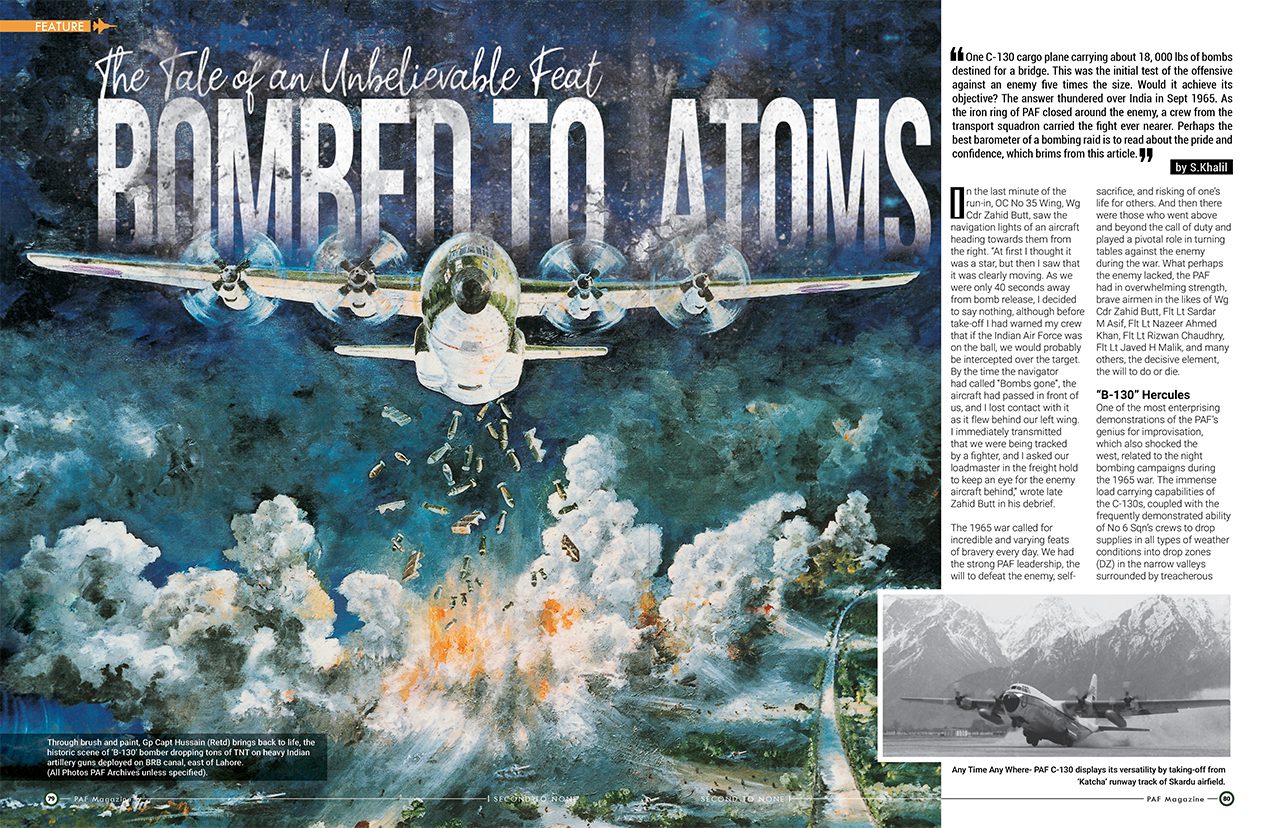One C-130 cargo plane carrying about 18, 000 lbs of bombs destined for a bridge. This was the initial test of the offensive against an enemy five times the size. Would it achieve its objective? The answer thundered over India in Sept 1965. As the iron ring of PAF closed around the enemy, a crew from the transport squadron carried the fight ever nearer. Perhaps the best barometer of a bombing raid is to read about the pride and confidence, which brims from this article.
I n the last minute of the run-in, OC No 35 Wing, Wg Cdr Zahid Butt, saw the navigation lights of an aircraft heading towards them from the right. “At first I thought it was a star, but then I saw that it was clearly moving. As we were only 40 seconds away from bomb release, I decided to say nothing, although before take-off I had warned my crew that if the Indian Air Force was on the ball, we would probably be intercepted over the target. By the time the navigator had called “Bombs gone”, the aircraft had passed in front of us, and I lost contact with it as it flew behind our left wing. I immediately transmitted that we were being tracked by a fighter, and I asked our loadmaster in the freight hold to keep an eye for the enemy aircraft behind,” wrote late Zahid Butt in his debrief.
The 1965 war called for incredible and varying feats of bravery every day. We had the strong PAF leadership, the will to defeat the enemy, self-sacrifice, and risking of one’s life for others. And then there were those who went above and beyond the call of duty and played a pivotal role in turning tables against the enemy during the war. What perhaps the enemy lacked, the PAF had in overwhelming strength, brave airmen in the likes of Wg Cdr Zahid Butt, Flt Lt Sardar M Asif, Flt Lt Nazeer Ahmed Khan, Flt Lt Rizwan Chaudhry, Flt Lt Javed H Malik, and many others, the decisive element, the will to do or die.
“B-130” Hercules
One of the most enterprising demonstrations of the PAF’s genius for improvisation, which also shocked the west, related to the night bombing campaigns during the 1965 war. The immense load carrying capabilities of the C-130s, coupled with the frequently demonstrated ability of No 6 Sqn’s crews to drop supplies in all types of weather conditions into drop zones (DZ) in the narrow valleys surrounded by treacherous mountains, gave the station commander of the transport base at Chaklala, Gp Capt Eric Hall, the idea of using these big transport planes as bombers.
Long before the 1965 war, the PAF had adapted its smaller twin-engined Bristol Freighter transport aircraft to carry a 4, 000 lbs bomb load beneath each wing. No 6 Sqn had undertaken a limited amount of training in night bombing against lightly defended targets. The normal load capacity of the C-130, however, was well over 20, 000 lbs, which gave it a bombing potential equivalent to the heaviest bombers of World War II.
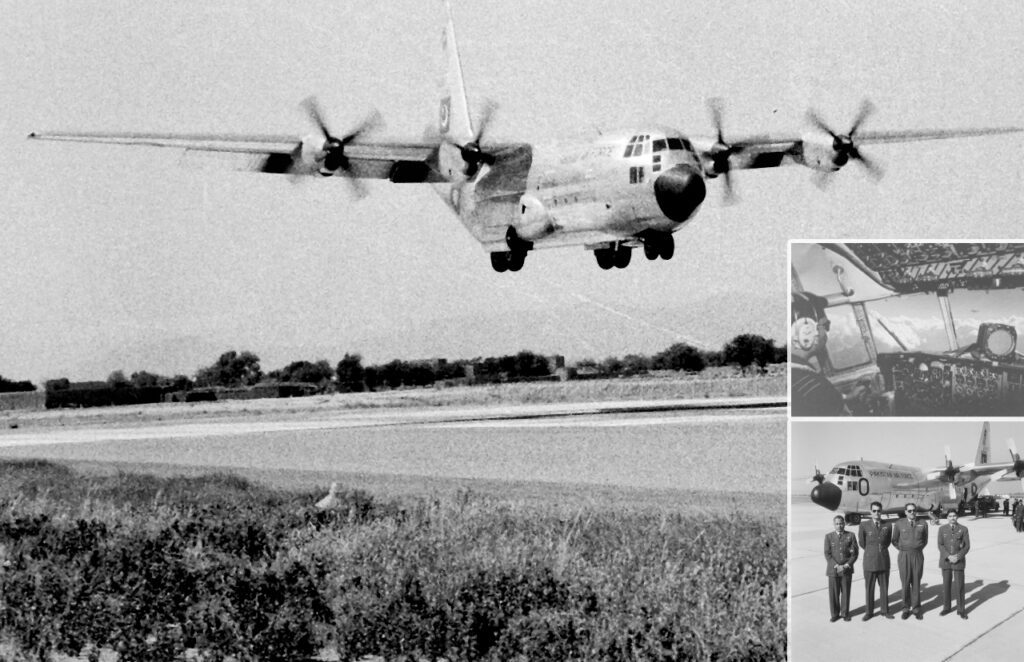
Gp Capt Eric Hall had already done some tinkering with the mechanics of how to carry the bombs in the C-130. His technicians had helped him devise some simple wooden cradles on which the bombs were laid on the floor of the Hercules. In flight, the cradles would be unleashed just before the DZ and would slide out like any other cargo. The bombs would separate quickly, assume normal trajectories and arm themselves on the way down. However, in the normal ‘drop’ configuration, the C-130 was structurally limited to a maximum speed of only 150 knots because of the open ramp and rear doors. This low speed vastly increased the giant aircraft’s vulnerability to ground fire or interception.
“Disbursed to Miranshah, as the war started, we were sitting together when Wg Cdr Zahid Butt, had an epiphany. Why not remove the ramp door?” recalled retired AVM Sardar Asif (then Flt Lt), as he narrated the incredible story of valour from the 1965 war.
“We had been dropping supplies, but delivering bombs was something never attempted from a C-130 Hercules. It was out of the working range of a cargo plane,” quipped AVM Sardar M Asif (Retd). He is one of the surviving crew members, who flew the first and most daring, risky, low-level night bombing raid from a transport aircraft. The target of the raid was the nuisance Kathua Bridge in Kashmir. “Destroy the bridge and we could cut off an important Indian supply line,” AVM Sardar M Asif (Retd) said.To execute the mission, the crew would have to fly with the ramp of the Hercules ‘open’ to drop the bombs. The odds were counter to the expression in the air force, “Speed is life.” With the ramp dropped open, the Hercules could only go as fast as 150 knots, explained AVM Sardar M Asif (Retd). “Flying this slow over enemy terrain was simply suicidal. Any faster, and the aircraft would suffer structural damage. To execute a bomb-run so daring, the crew needed to fly at least 250 knots, 250 feet above ground level (AGL), to evade enemy radar and least of all, be challenged by Indian fighters.”
After some plastic surgery on the rear end of the aircraft, the C-130 was ready for action. The crew got their blessing from the higher Command, when Air Marshal Nur Khan, the then C-in-C of PAF, liked the idea of carrying out a surprise low level bombing run in the cover of darkness.
The C-130 got airborne, with Wg Cdr Zahid Butt as captain and Flt Lt Sardar Asif in the co-pilot seat, and with two 500 lb bombs in the belly of the Hercules. The crew had selected the Jamrud Range to test their theory. However, there was another problem. They were unable to get their hands on 3 to 4 minutes delay switches that they had requested for the bombs.
“If we were going to drop the bombs from 500 ft AGL, we would need time to get away from the target before the debris and shrapnel from the explosion could pierce the aircraft,” the retired senior officer said. So the crew decided to go in at almost tree top level, design a climbing profile that ensured that the aircraft reached overhead the target at 8, 000 ft, deliver the bombs, descend below the radar cover and return home in one piece. On 9 and 10 September, 1965, the practice run over Jamrud was spot on. In three days the C-130 was converted to bombing configuration and was ready for its offensive operations, by the night of 11 September. No bombsight, of course, was fitted to the C-130s, whose crews would use the same aiming techniques for bombing as for supply dropping. Wg Cdr Zahid Butt, who had insisted on conducting the first mission, had calculated that at about 280 knots, would give the Indian defence system an approximate reaction time of only seven minutes, between detection of the C-130 and the start of its bombing run, reducing the risk of interception to a minimum.
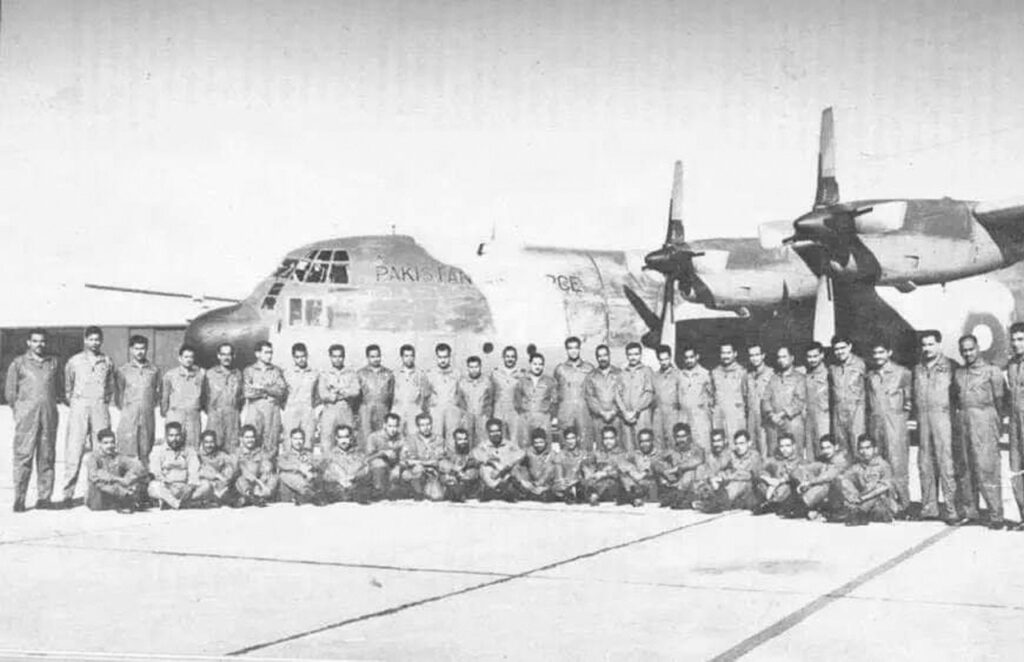
On 12 September, an atmosphere of optimism prevailed on the tarmac at Peshawar. Prayers were also said and they needed them. When the enemy were busy transporting supplies through the Kathua bridge, the PAF were loading a more lethal cargo into the belly of the C-130. In the dead of the night, the crew took off, with the intent to paralyze India and to shorten the war. Yes, it was a day to remember. It was such daring efforts that out of the many sky battles, the PAF had gradually achieved air superiority.
“We were young. Missions like these got our juices flowing,” said AVM Sardar M Asif (Retd) reliving the moments in his mind. At night, unseen and unheard until their payload hit, they took-off to strike terror into the hearts of the enemy.
To avoid getting picked up by the enemy radar network, they made their approach low-level, skimming the mountains. The calm, little moments before the storm came to an end when Flt Lt Sardar Asif had a visual of the bridge. The C-130, now a dangerous all-purpose aircraft, climbed to bombing altitude for the knockout punch. From 8,000 ft, still maintaining climbing attitude, the full weight of the raid fell on the target area as the CWO Ashfaq, the load master literally pushed the 18,000 lbs cargo of destruction out of the tail end. The blast sent an inferno of flames into the night sky visible for miles.
The shock waves produced from the explosion were so immense that the plane was shaken and crew found it difficult to control the aircraft at these lower speeds. In the melee, instead of banking right towards the planned escape route, the pilots turned left, only to find themselves over an Indian airfield behind the hills. Anti-aircraft guns started screaming, “Oh no you don’t.” and the PAF boys saying, “Sorry boys. We will.”
“The enemy gave us a warm welcome, thousands of pounds of flak fired by their ack-ack criss-crossed our track. We had already descended lower and their guns filled the sky with deadly black mushrooms above us. We could almost smell the nauseating acid smoke,” he said thinking back.
Night Fighter Alert
It was an almost accurate run and all 18, 000 lbs of arsenal fell in the target area, when the loadmaster in the freight load, who was on the lookout for enemy aircraft called, “There’s something coming in with no navigation lights.” This was the same aircraft Wg Cdr Zahid Butt saw earlier, which he thought was a star, had its nav lights on. The enemy seemed to pour in on them from every point on the dial – port side, six o’clock high.
“I wanted to descend and take evasive action. I turned hard and reduced the speed to about 130 knots. Naturally, the fighter couldn’t match the tight turn, and he overshot us, appearing just ahead and below. If I’d had a front gun or two, I could have shot him down, but of course the C-130 was unarmed. During our low level exit, I continued taking evasive action, and we did not relax until we had crossed the border and were flying over our part of the earth,” Wg Cdr Zahid Butt wrote in his debrief. Wg Cdr Zahid Butt kept a steady hand in the rough going. Back at the base, ground crews uncrossed their fingers, when they saw their sweet flying ship returning. “The only damage we found to the aircraft was a 0.5 inch bullet hole in the port wing tip,” wrote Wg Cdr Zahid Butt. A stubborn tough gang, this outfit.
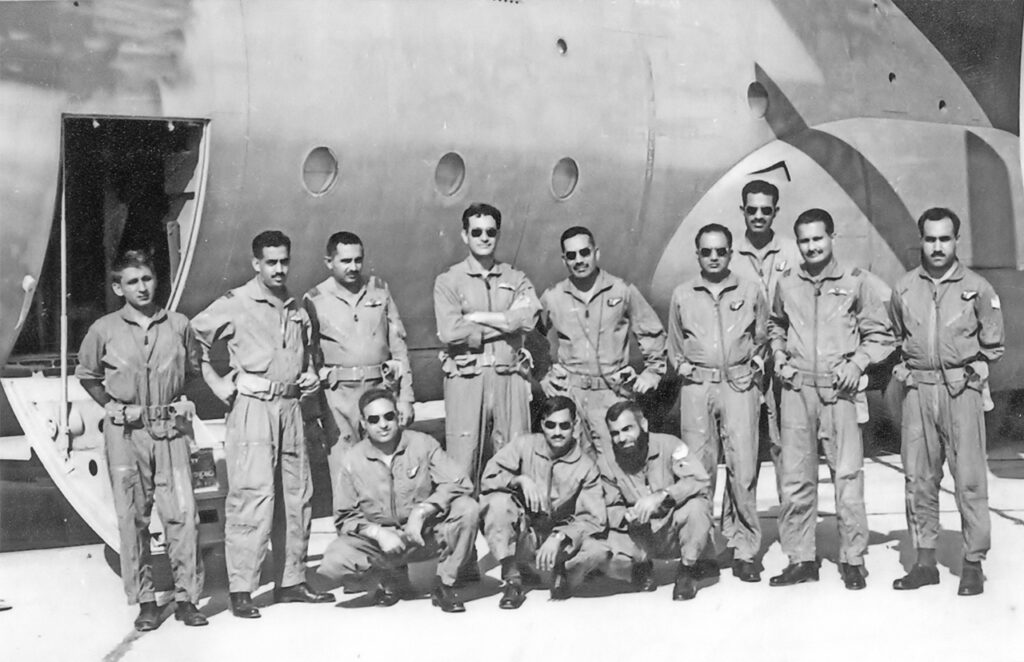
“His cool and his courage saved his crew,” said AVM Sardar M Asif (Retd) about his late comrade.
Although it was an almost accurate run and all 18, 000 lbs of arsenal fell in the vicinity of target area, the bridge was not destroyed. The crew may not have succeeded to break a vital link in the supplies, however, the shattering surprise attack shocked the enemy nonetheless, lowering their morale and the will of the Indian forces and their leaders. Heavy flak marked the enemy’s determination to protect their assets, but from then on, PAF’s bombing crews were seeking targets of opportunity and pulverizing them. The PAF higher command could only express the pride and confidence in those who carried forward the nation’s struggle against aggression.
There was only one lesson learnt from the raid that night. “When we de-briefed, the seniors cautioned us not to lose quick-wittedness when experiencing severe turbulence produced by the shock wave of the exploding bombs,” AVM Sardar M Asif (Retd) said laughing.
The bombing raid over Kathua may not had achieved the desired results, however, it armed the PAF with a new capability- provision of an improvised ‘Heavy Bomber’ in the shape of its versatile C-130 ‘Hercules’. Not only the transport air crew but the air staff were confident that the PAF C-130 could be subsequently used as a ‘B-130 Bomber’ during the war. PAF didn’t have to wait for long. An SOS message came from the brethren in Khakis who needed immediate help at a crucial juncture during the war.
During the closing days of the war, Indian Army had put to offensive whatever they had in a desperate attempt to capture Lahore. With all guns blazing they made a final attempt to breach Bambawali-Ravi-Bedian (BRB) Canal and fulfill their nefarious designs. Indian heavy artillery guns were amassed East of BRB to bomb the city of Lahore day-in and day-out. The indiscriminate fire mainly targeted the civilian population, an act only a brutal enemy could conspire.
Two sets of aircrew had been created specially to conduct night bombing missions, comprising the most experienced aircrew the PAF had to offer – daring and gutsy. The first crew set under the command of Wg Cdr Zahid Butt consisted of Flt Lt Sardar Asif (Captain/Co-pilot), Flt Lt Rizwan Chaudhry (Navigator), WO M Ashfaq (Load Master). The second set comprised Flt Lt Nazeer Ahmed Khan (Captain), Flt Lt Javed Hayat Malik (Captain/Co-pilot), Flt Lt Khalid H Wasti (Navigator) and WO M Hafeez (Load Master). Entire missions were flown at extremely low altitude. Little time was afforded to convert the aircraft into bombing configuration. This was where the expertise of CWO Ashfaq came in. He led the team of technicians and loaders to prepare the aircraft for bombing missions in shortest possible time. “The focus was on completing the mission successfully, not on how we’ll get back. If we did a good job, progress would improve a great deal,” AVM Javed H Malik (Retd) said. In one of the heaviest night time air strikes in a C-130, the second team was to concentrate their payload of 18, 000 lbs of bombs on Indian guns just outside Lahore close to Attari.
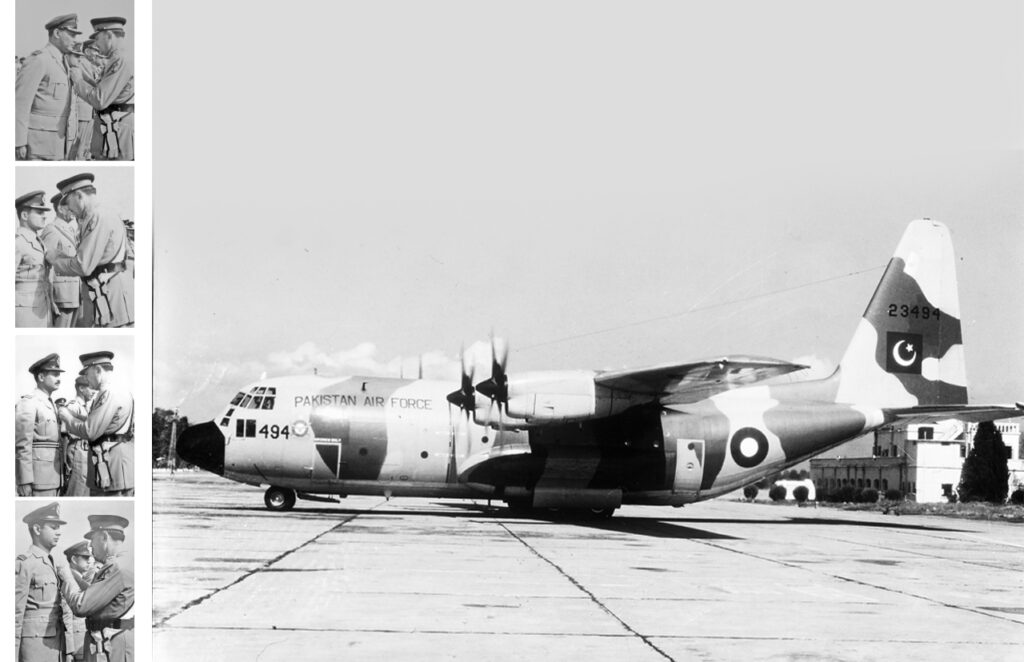
Responding to the earlier request of Pak Army, PAF planned a night bombing mission on 21st September, 1965, on the deployment of Indian heavy guns at Bambawali-Ravi-Bedian (BRB) Canal, using the second team. Once the plan of bombing BRB by an improvised C-130 carrying such a heavy payload was shared with Pak Army commander, they were unconvinced. They argued that the friendly troops were located too close to the bomb line and in case of any miscalculation on part of C-130 crew, the safety of their own troops would be in danger. Moreover, they were of the opinion that any error in drops could also destroy the BRB canal thus inundating the entire sector. However, on assurance of Major (later Maj Gen) Naseerullah Babur (the Army liaison officer with No 6 Sqn who was overwhelmingly impressed by the professionalism of the aircrew) the Pak Army leadership got convinced. This put an extra burden on the aircrew. They knew that there was no chance of failure. Their own pride and honour of PAF was at stake.
In the dead of night on 21 September, Flt Lt NA Khan and Flt Lt Javed Malik got to the tarmac. There awaiting them was their giant four engine Hercules loaded with conventional 500 pounders, which had a date with certain guns. The crew took their places. Pilots NA Khan and Javed Malik made themselves at home in the cockpit. Flt Lt Wasti making last minute checks at his navigator station. The Hercules swung into the wind and zeroed in on the enemy target. Its siren became a harbinger of death in the battlefield. The other crew set under the command of Wg Cdr Zahid Butt was to follow after some interval. The two C-130s reached their check point on the River Ravi at 2300 hours. They started their carefully timed run-in. The cargo planes climbed to 8, 000 ft. Some 20 tons of terror rained from the skies, devastating the Indian artillery, a vital cog in one of the major Indian deployments. Some 40 guns disintegrated into molten chaos.
The aerial assault was without parallel in PAF history, with precision not seen before either. In almost less time than it takes to tell, the bombs shattered India’s military objective. The target area, which was a pretty busy place pre blitz, the guns were of as much use to the Indians as last Sunday’s newspaper, said AVM Javed H Malik (Retd).
“Down there was a pyrotechnics display. Even that high, the C-130 shuddered and rattled as if caught in a violent turbulence. Everything perished,” AVM Javed H Malik (Retd) recalled. There was no part of the target area that had not felt the weight of the C-130’s attack. Rare fire rose above the smoke and dust clouds.
This time there were no welcoming ack-acks, as the pilots ran out of the target area and set course for home. Flaps down,
Flt Lt NA Khan and Flt Lt Javed H Malik eased down the Hercules on the runway, a lot lighter when they had left.
Pakistan Army was pleased. The enemy’s heavy artillery guns were destroyed and with it, India’s war plans,” said AVM Javed H Malik (Retd). This night bombing tactic resulted in a ceasefire two days later. During the war, No 6 Sqn flew 22 such night bombing missions against the enemy without losing a single aircraft. During the war, Indian media, as usual claimed that IAF Bombers had destroyed several C-130s parked at Chaklala during one of the night raids. However, after the war, the station commander, Gp Capt Eric Hall very proudly lined up all five Hercules in the inventory of PAF during the visit by IAF air chief after the cease fire.Wg Cdr Zahid Butt and his exemplary aircrews set the highest possible standards for our nation to ensure that the people never forgot the sacrifices made by the airmen of Pakistan Air Force. They fought to preserve freedoms we all enjoy today, and often at times take for granted. As we mourn the loss of most of these gallant aircrew who have left us over time, we stand by these heroes, worthy of the nation’s highest honour for valour in action.
It’s September again, that time of the year to remind Indians that war does not pay and that General Chuadhry, then C-in-C Indian Army, who dreamt of celebrating victory in Lahore Gymkhana Club over a peg of whisky, was a bad prophet.
